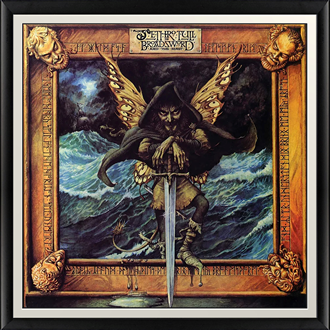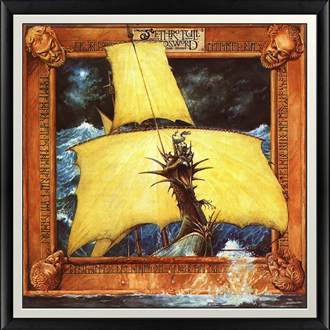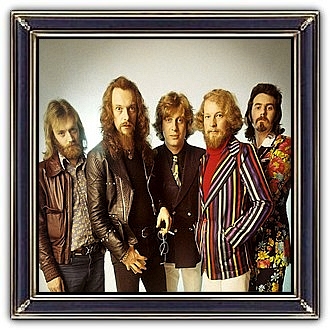Jethro Tull - Broadsword and the Beast
Hey! Hello! What about this?
release - 1982
album art - Ian McCaig
cover front

Iain McCaig, a Jethro Tull fan and artist, collaborated closely with Ian Anderson to craft the album art for "Broadsword and the Beast." Their goal was to visually encapsulate the album's essence, resulting in an intricate work of symbolism.
McCaig drew inspiration from early discussions and a cassette containing Ian Anderson's evolving compositions. This propelled him on a creative journey to capture the heart of the music. The collaboration between Anderson and McCaig sparked numerous ideas, leading McCaig to sketch an image of a bard tormented by a pan pipe-playing creature. This creature, a "fey little fellow," emerged as the central 'Beastie' figure of the cover
The fusion of "Beastie" and "Broadsword" titles formed the foundation of McCaig's masterpiece. He found inspiration as a fan in the Series "The Chronicles of Narnia". C.S. Lewis's "Voyage of the Dawn Treader," where a painted sea comes alive, merged seamlessly with Anderson's lyrics. The song's opening lines intertwined with the initial creature sketch, giving birth to the vivid imagery of the cover.
Asking MCCaig if there is a story behind the imagery, he asnwers: ''yes, and no. I have my own ideas, but if you listen to the music, look at the cover and unleash your imagination, you’ll find many more of your own."
title

The album's naming process mirrored its creative journey. Initially, the band considered naming it "Beastie," aligning with the first track. However, inspired by their "Aqualung" album, they opted for distinct titles for each side, ultimately combining both into the album's moniker.
The emphasis on "Broadsword" led fans to affectionately dub it the "Broadsword" album.
puzzle-like Art

McCaig's penchant for puzzle-like art was evident as he cleverly concealed band members' faces within the artwork. These hidden elements adorned the corners of the picture frame. The edges of the cover art feature writing in the runic alphabet used by J. R. R. Tolkien in The Hobbit, and translate to the opening verse of the song "Broadsword", inviting fans to unravel its mystery.
Jethro Tull praised the cover art, which was later incorporated into the stage setup for the "Broadsword" tour. Ian Anderson's live performance featured a lifelike Beastie with flashing eyes and real bones, adding an eerie touch to the cover's power. Many fans even tattooed the artwork on their bodies!
artist

Jethro Tull were a British rock group, formed in Luton, Bedfordshire, in 1967. Initially playing blues rock, they developed their sound to incorporate elements of British folk music and hard rock to forge a progressive rock signature. The band was led by vocalist/flautist/guitarist Ian Anderson. Their first commercial success was the folk-tinged blues album Stand Up (1969), which reached No. 1 in the UK charts. Their musical style shifted in the direction of progressive rock with the albums Aqualung, Thick as a Brick and A Passion Play, and shifted again to hard rock mixed with folk rock with Songs from the Wood and Heavy Horses.
The last works released as a group were in 2003, though the band continued to tour until 2011. In April 2014, as he was concentrating on his solo career, Anderson said that Jethro Tull were finished. Jethro Tull have sold over 60 million albums worldwide.
also in gallery











